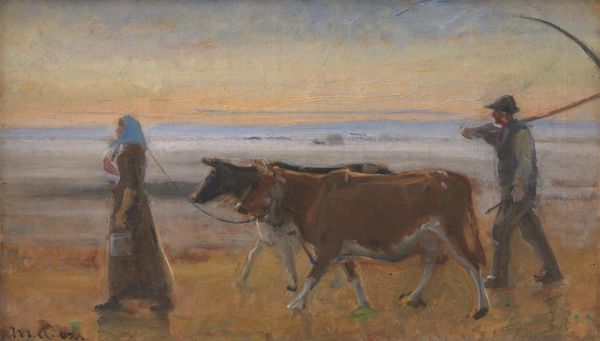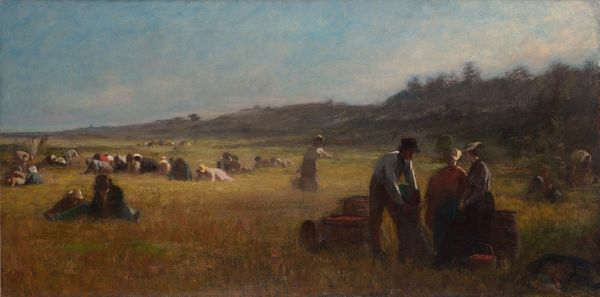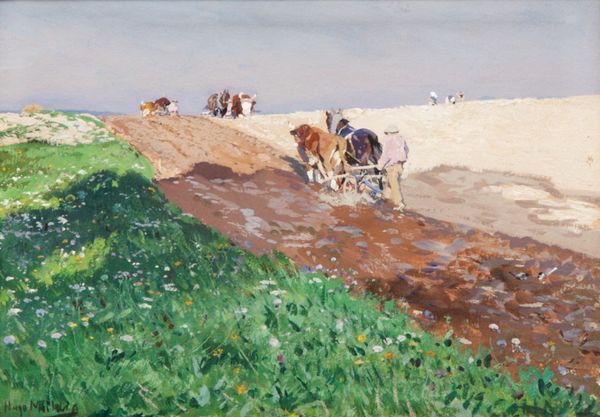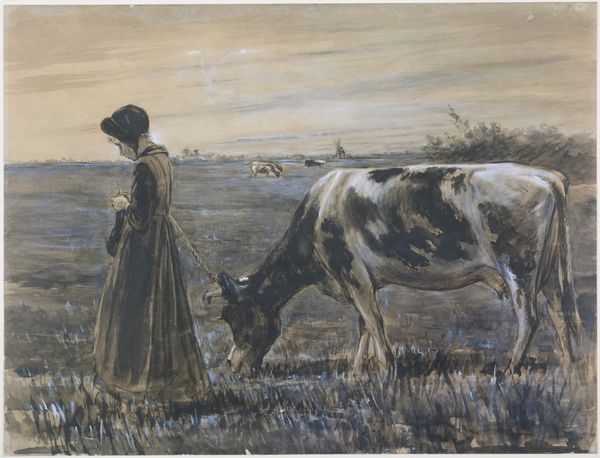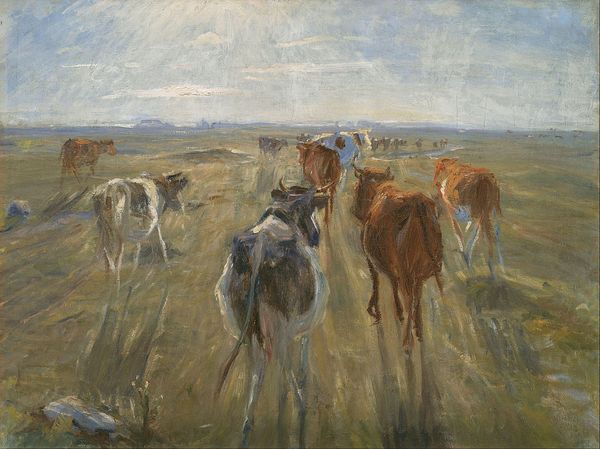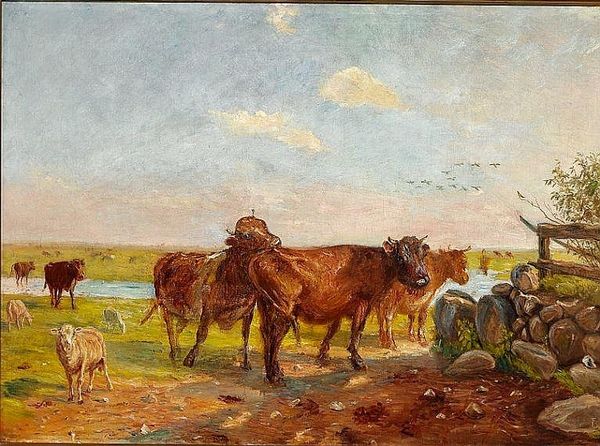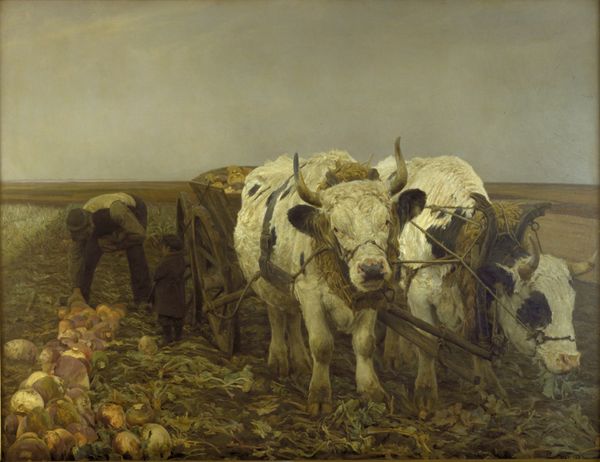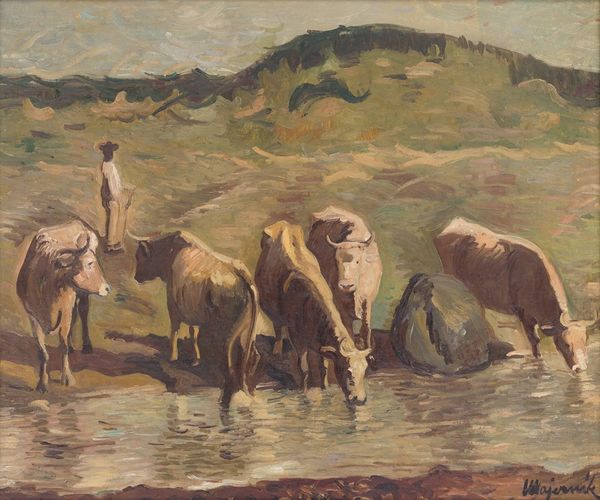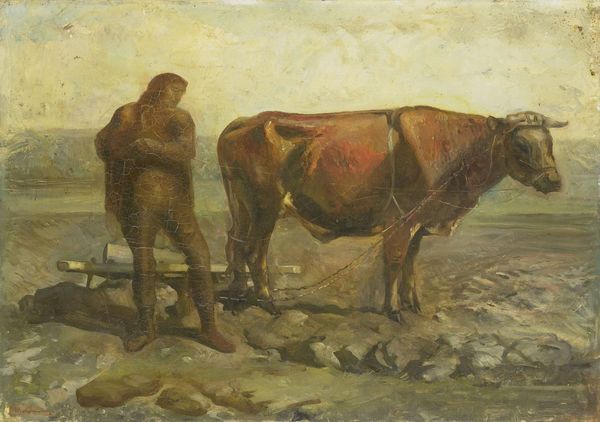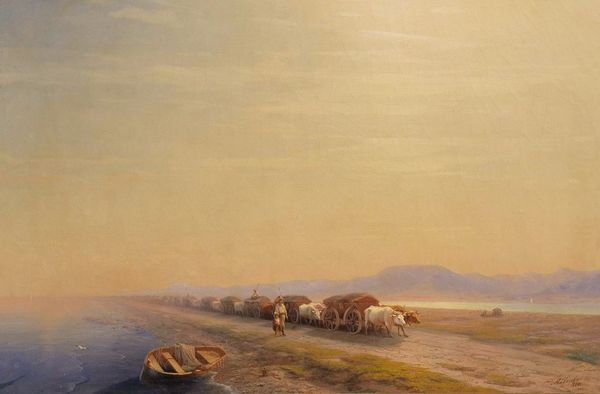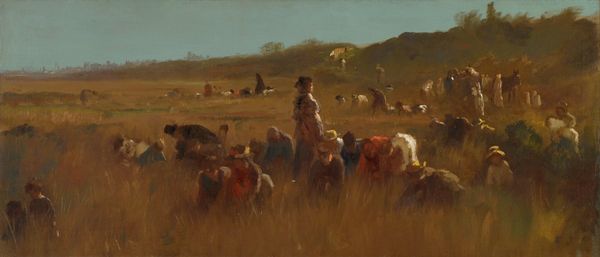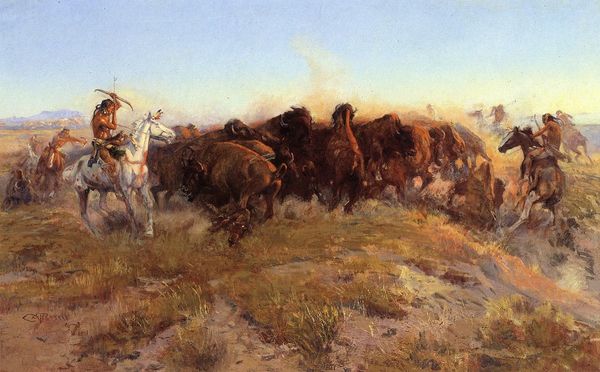
Copyright: Public Domain: Artvee
Editor: We’re looking at Leon Wyczółkowski’s "Plowing in the Ukraine," created in 1892 using oil paint. I’m immediately struck by the scene’s tranquility despite the depiction of hard labor. What can you tell me about this painting? Curator: This image provides a window into the socio-political landscape of late 19th-century Ukraine. The act of plowing itself held deep symbolic meaning tied to concepts of nationhood and the connection to the land. Think about the institutional structures in place during that era – large estates, serfdom – and consider who had access to land ownership and power. How does Wyczółkowski’s romanticized portrayal either reinforce or challenge these existing power structures? Editor: It's interesting that you frame it as a romanticized portrayal. To my eye it seems somewhat realistic, with visible effort apparent. Curator: While elements of realism are present, the atmospheric rendering softens the harsh realities of peasant life. Consider the colors, the diffused light; how might those choices influence our understanding of this subject and potentially downplay any underlying socio-economic tensions? What do we know of museums exhibiting such paintings at this time, and which publics are these paintings intended for? Editor: So you're saying the beauty almost sanitizes the hard labor portrayed. I hadn’t thought of it that way before, but it's true the lighting makes it feel almost ethereal. Curator: Exactly! And remember, visual representation has power. Depicting rural labor in this way can serve to evoke feelings of national pride while potentially obscuring the existing social and economic disparities. What impact might it have if the artist presented the plowing as something uglier or more difficult, a version in which social struggles take center stage? Editor: I guess I was seeing the beauty first. Now I realize it invites us to perhaps consider whose story isn’t being fully told here, a reality of economic and social disparity behind the surface level presentation. Curator: Precisely. Seeing art through a historical lens helps us recognize how these visual narratives can be both powerful and potentially problematic, reflecting and shaping cultural perspectives.
Comments
No comments
Be the first to comment and join the conversation on the ultimate creative platform.
